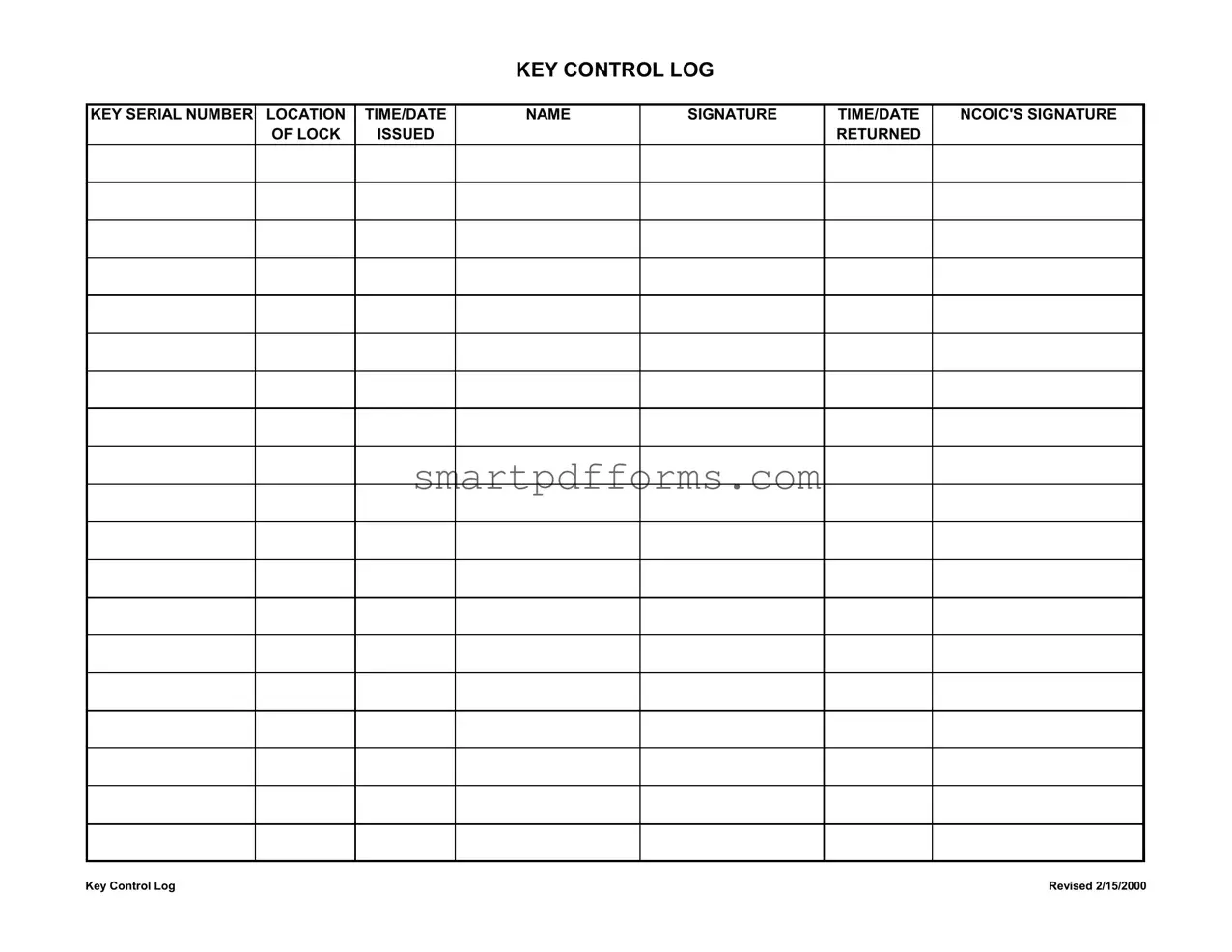Blank Key Control Log PDF Template
A Key Control Log form is an essential tool used for documenting and managing the issuance and return of keys within an organization. It meticulously records key details such as the key's serial number, the location it accesses, timing of issuance and return, as well as the names and signatures of the individual issuing the key and the individual receiving it. To ensure security and accountability for your organization’s keys, consider filling out the form by clicking the button below.
Make This Document Now

